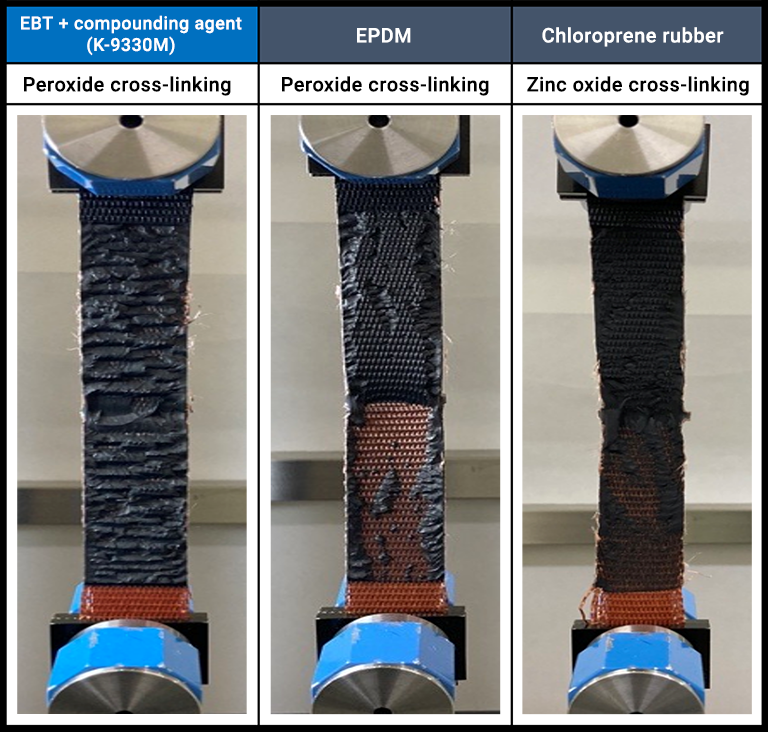Functions
 Flexibility (low hardness)
Flexibility (low hardness)
Concept
Since EBT has lower hardness and superior flexibility to conventional EPDM, it can be expected to suppress the increase in hardness in highly filled formulations.
Applications
- Gaskets
- Hoses
Flexibility (ethylene content and hardness)
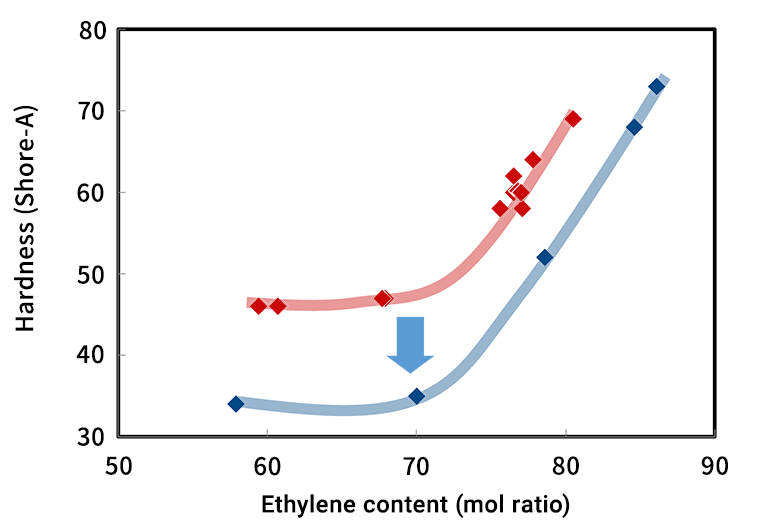
- EPDM
- EBT
 Low-temperature properties (DSC-Tg)
Low-temperature properties (DSC-Tg)
Concept
Mitsui Chemicals' EBT (K-9330M, K-8370EM) is a polymer designed with an adjusted ethylene content to achieve a lower glass transition temperature.
Applications
- Low-temperature gaskets
- Hydrogen gaskets
- Low-temperature hoses
Low-temperature properties
(Glass transition temperature / DSC-Tg and ethylene content)
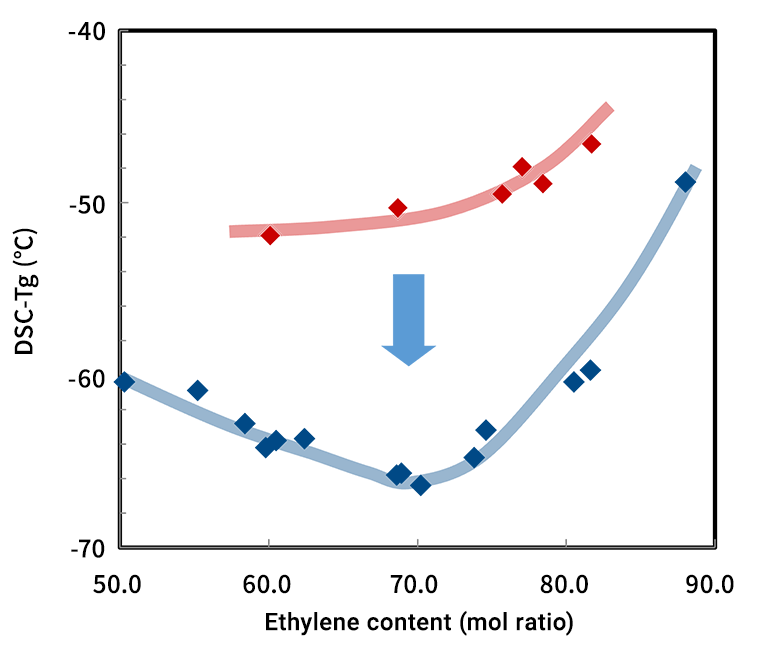
- EPDM
- EBT
Low-temperature properties
(glass transition temperature/Tg, melting point/Tm)
| EBT | EPDM | CR | VMQ | ||
|---|---|---|---|---|---|
| K-9330M | K-8370EM | ||||
| Tg | -66℃ | -68℃ | -49℃ | -39℃ | -127℃ |
| Tm | - | - | - | - | -41℃ |
 Low-temperature properties (TR Test)
Low-temperature properties (TR Test)
Concept
EBT has superior rubber properties at low temperatures compared to existing EPDM.
EBT has a proven track record in a wide range of applications, including low-temperature sealants, hydrogen sealing materials, and automotive parts for vehicles in cold regions, taking advantage of these low-temperature properties.
Applications
- Low-temperature gaskets
- Hydrogen gaskets
- Low-temperature hoses
Low-temperature properties (TR Test)
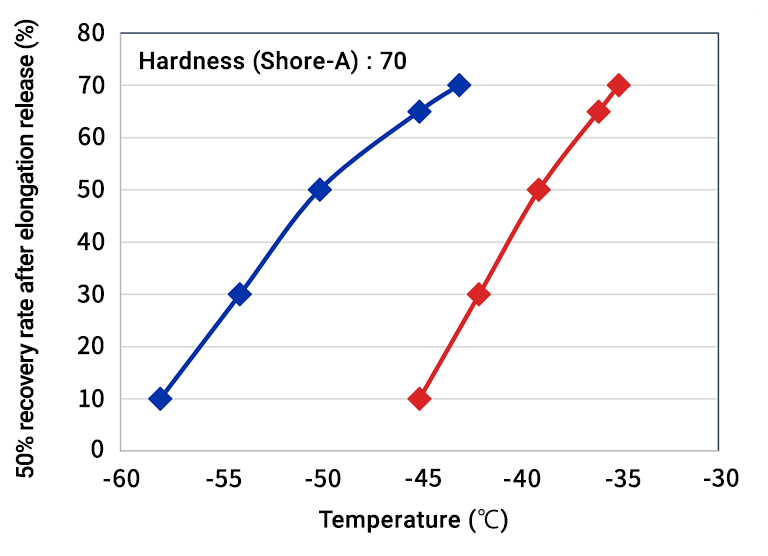
- EBT
- EPDM
 Low friction loss
Low friction loss
Concept
EBT reduces tanδ in comparison with chloroprene rubber, and suppresses heat generation.
When used in applications such as transmission belts, EBT improves fuel efficiency and contributes to reducing GHG emissions.
Applications
- Transmission belts
Friction loss (tanδ temperature dependence)
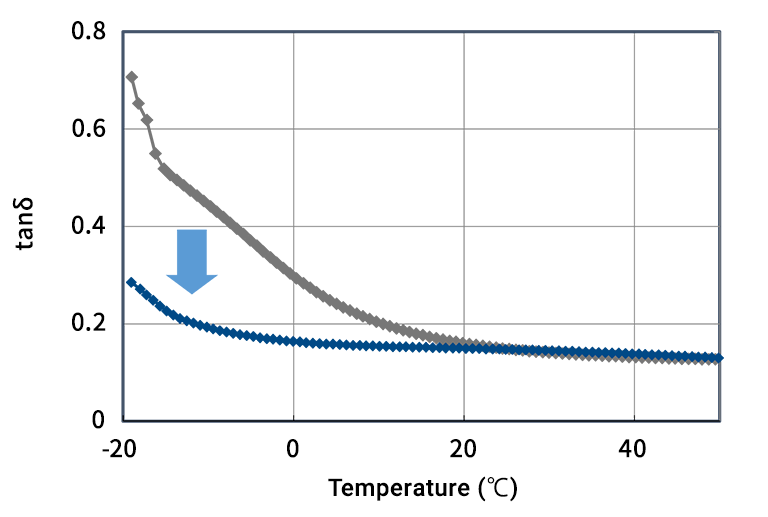
- Chloroprene rubber
- EBT
 Adhesion
Adhesion
Concept
EBT (K-9330M) has excellent adhesive properties before vulcanization.
It has a track record of use in adhesive layers, including industrial belts, conductive belts, and industrial rollers.
Applications
- Belt adhesive layer
- Roller adhesive layer
Example application : Belt adhesive layer
By combining EBT (K-9330M) with a compounding agent, we have been able to successfully improve adhesion to canvas (peel strength with rubber) in comparison with chloroprene rubber and EPDM.
EBT also contributes to long service life of belts due to its superior heat aging resistance in comparison with chloroprene rubber.
Adhesion (probe tack test)
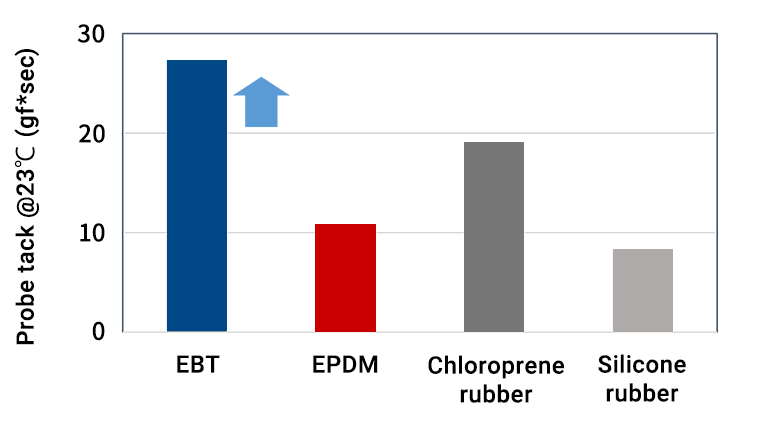
Adhesion to canvas
[Peel strength]
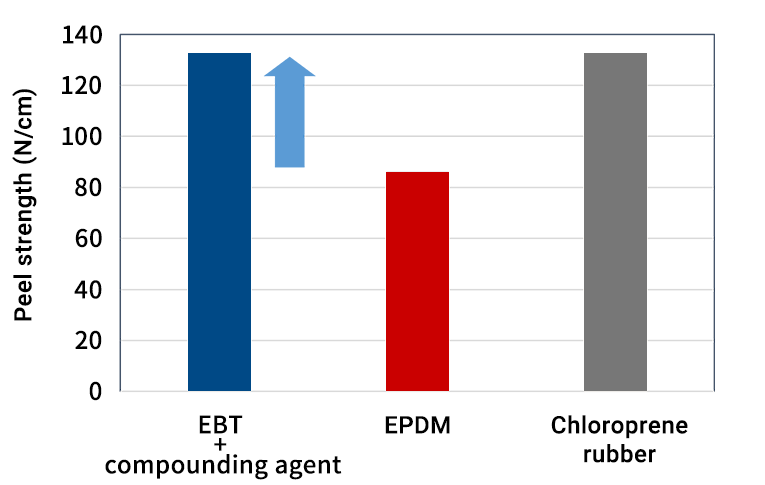
[Appearance with rubber]
